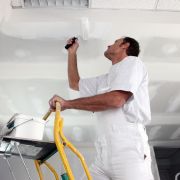Business owners are required to navigate the complex world of workplace safety. Here’s some things you need to know to ensure your business is compliant.
Injury in the workplace
Illness or injury in the workplace is more common than you might think. No matter what industry you’re in, it’s an area of running a business that can’t be ignored.
The statistics speak for themselves. There were 106,565 serious workers’ compensation claims in 2013/14, which equates to 5.9 serious claims per million hours worked, according to Australian Workers’ Compensation Statistics data from Safe Work Australia. The economic cost of work-related incidents in 2012/13 was $61.8 billion, statistics show.
The three industries with the highest number of serious claims per million hours worked were transport, postal and warehousing (9.3%), healthcare and social assistance (8.7%), and agriculture, forestry and fishing (8.6%) in 2013/14.
Most of the injuries during this time were musculoskeletal disorders, which led to 90% of serious claims – the most common were traumatic joint/ligament and muscle/tendon injuries (45%). While claims are down on previous years, businesses still need to be prepared, just in case.
“ Wise employers foster a health and safety culture within the workplace “
Protect your business
The onus is on Australian business owners to navigate the complex world of workplace safety, which includes understanding workers’ compensation requirements. Workers’ compensation insurance is compulsory for business owners in all states and territories.
” Workers’ compensation insurance is compulsory for business owners in all states and territories. “
This form of insurance pays employees if they are injured at work or become sick due to their work. The payment can cover their wages if they’re not fit to work, medication expenses and rehabilitation.
Employers are responsible for taking reasonable steps to ensure that the workplace is a safe working environment, which extends to events where employers are technically off the clock, such as work Christmas parties.
Uninsured employers may still be able to claim for workers’ compensation benefits for staff in case of injury or illness, so check with your local authority. There’s lots of great information on the Safe Work Australia site.
Each state and territory has independent regulators and administrators in place to run workers’ compensation, so make sure you become familiar with your local authorities. The rules while similar differ between each state and territory
Managing risks
Wise employers foster a health and safety culture within the workplace, providing regular communication around safety and injury management to raise awareness among staff.
This process includes encouraging staff to identify potential injury or illness threats, and being sure to address these issues immediately. Rewarding positive contributions to health and safety in the workplace can also have a significant impact on the cultural change within an organisation.
Taking immediate action after an incident to minimise effects and make sure people are supported is paramount.
Make sure your workplace has emergency response plans for evacuations and medical response systems in place. Be sure to conduct an investigation to understand how the incident occurred and document everything, including taking photos of where the incident occurred and then take steps to prevent it from happening again.
The steps to planning ahead
Efficiently managing work health and safety risks within a workplace means having a systematic approach, which involves five key elements. These are:
- Governance: Ensure your workplace has the organisational framework, procedures, policies and processes in place
- Prevention: Develop specific hazard policies and procedures for your workplace
- Response: If a safety incident takes place, you must take steps to remove the hazard that caused it, and implement changes to stop it from happening again
- Managing hazards: An effective risk and hazard management methodology will allow you to identify hazards that pose a risk to your workers and resolve them before they cause injury or illness
- Recovery: Where a worker has been injured, the employer has responsibilities to put in place a rehabilitation management system for workplace injury or illness
Source: Comcare.gov.au
Tips to foster a health and safety culture:
- Clear communication: The flow of information ensures everyone knows what’s expected of them and what they can expect at work. That means the work gets done safely
- Talk it up: Enthusiasm about health and safety will save you money in the long run
- Reduce risk of injury: Think, plan and invest in systems to reduce the risk of injury to keep workers safe
Source: Safe Work Australia and South Australian firm, Williams Seafoods
This is an area of business that’s important to take seriously. Even if you’ve dealt with this area of your business six months ago, it’s important to revisit safety issues regularly, so make sure you schedule regular audits, and include your staff in the process.
For more information and tailored advice, speak to your Steadfast insurance broker who can advise you on your workplace health and safety risks.






